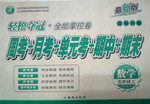题目内容
阅读下面材料,在空白处填入适当的内容(不多于3个单词)或括号内单词的正确形式。
One morning , I was waiting at the bus stop , worried about 1. (be ) late for school .There were many people waiting at the bus stop , 2. some of them looked very anxious and 3. (disappoint) .When the bus finally came , we all hurried on board .I got a place next 4. the window , so I had a good view of the sidewalk .A boy on a bike 5. (catch)my attention .he was riding beside the bus and waving his arms . I heard a passenger behind me shouting to the driver , but he refused 6. (stop ) until we reached the next stop .Still , the boy kept 7. (ride) . He was carrying something over his shoulder and shouting .Finally , when we came to the next stop , the boy ran up to the door of the bus . I heard an excited conversation .Then the driver stoop up and asked, “8. anyone lose a suitcase at the last stop ?” A woman on the bus shouted , “Oh dear “ It is9. (I)”.She pushed her way to the driver and to the little boy .Everyone on the bus began talking about what the boy had done .And the passengers _10._(sudden) became friendly to one another .
1.being
2.and
3.disappointed
4.to
5.caught
6.to stop
7.riding
8.Did
9.me /mine
10.suddenly
【解析】
试题分析:本文属于记叙文,记叙了作者在汽车上所见到的事情。尽管车上的人很多,但是人们看起来很冷漠。后来作者发现一个男孩骑着自行车紧跟在汽车的后面,原来他是前来询问是否有人丢了包。他的善良 诚实感动了所有的人,人们之间也有了友好的交流,汽车上的气氛也变得和谐融洽了。
1.考查动名词。介词about后应该跟名词或动名词,故答案填being。
2.考查连词。根据内容可知前后是顺承关系,故用and。
3.考查形容词。由前面可知人们感到失望,用-ed结尾的形容词disappointed。
4.考查固定短语的表达。固定短语 next to 意思是“靠近,临近”,答案填to。
5.考查动词时态。 根据故事内容可知是讲述过去发生的事情,应该用一般过去时,填caught。
6.考查固定短语的表达。固定短语refuse to do sth意思是“拒绝做某事”,所以填to stop。
7.考查固定短语的表达。固定短语keep doing sth意思是“一直做某事”。
8.考查动词。此处是询问过去发生的事情应该用一般过去时,谓语是lose所以用助动词Did。
9.考查代词。从语境判断此处是做表语,强调“是我的包,或者是我丢了包”,填me或mine。
10.考查副词。此处是修饰动词,所以应该用副词做状语,填suddenly。
考点:考查学生对语法知识及语境的理解。

 轻松夺冠全能掌控卷系列答案
轻松夺冠全能掌控卷系列答案